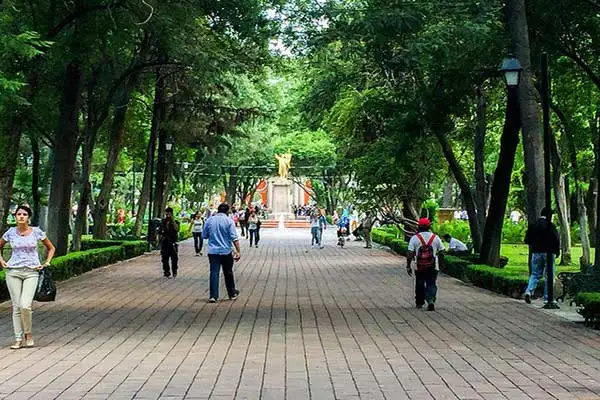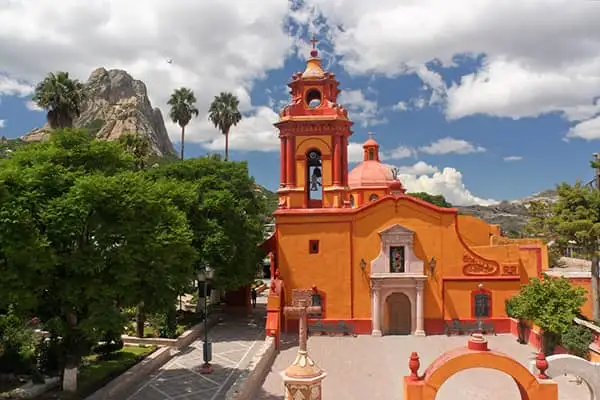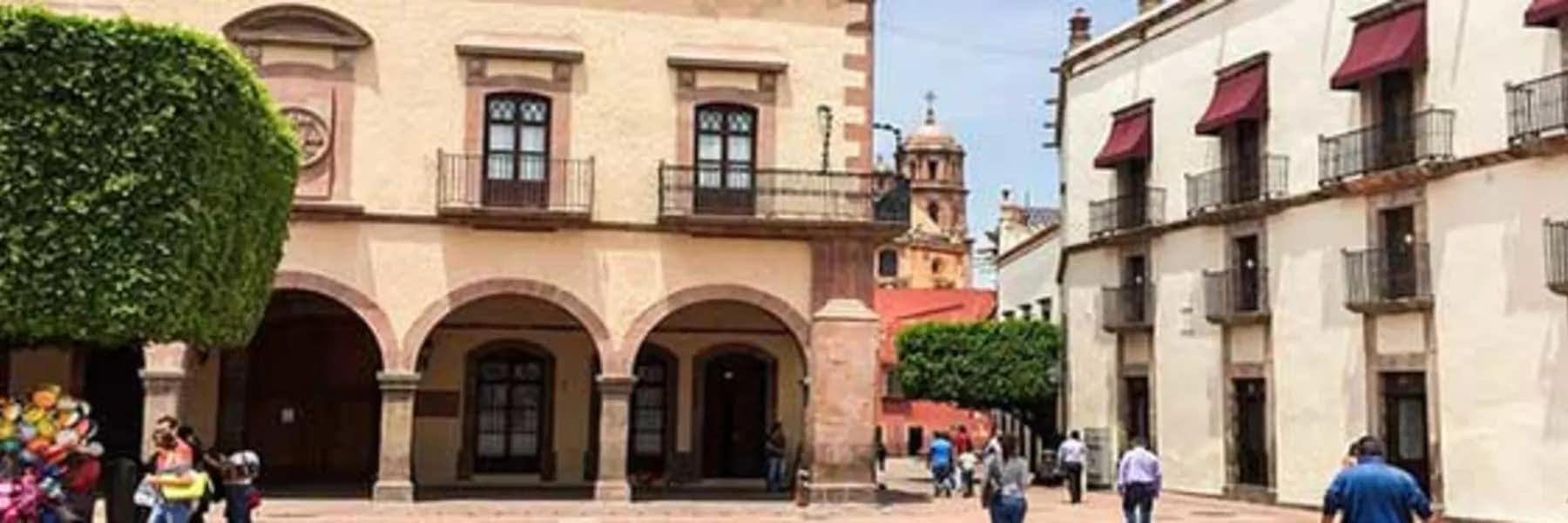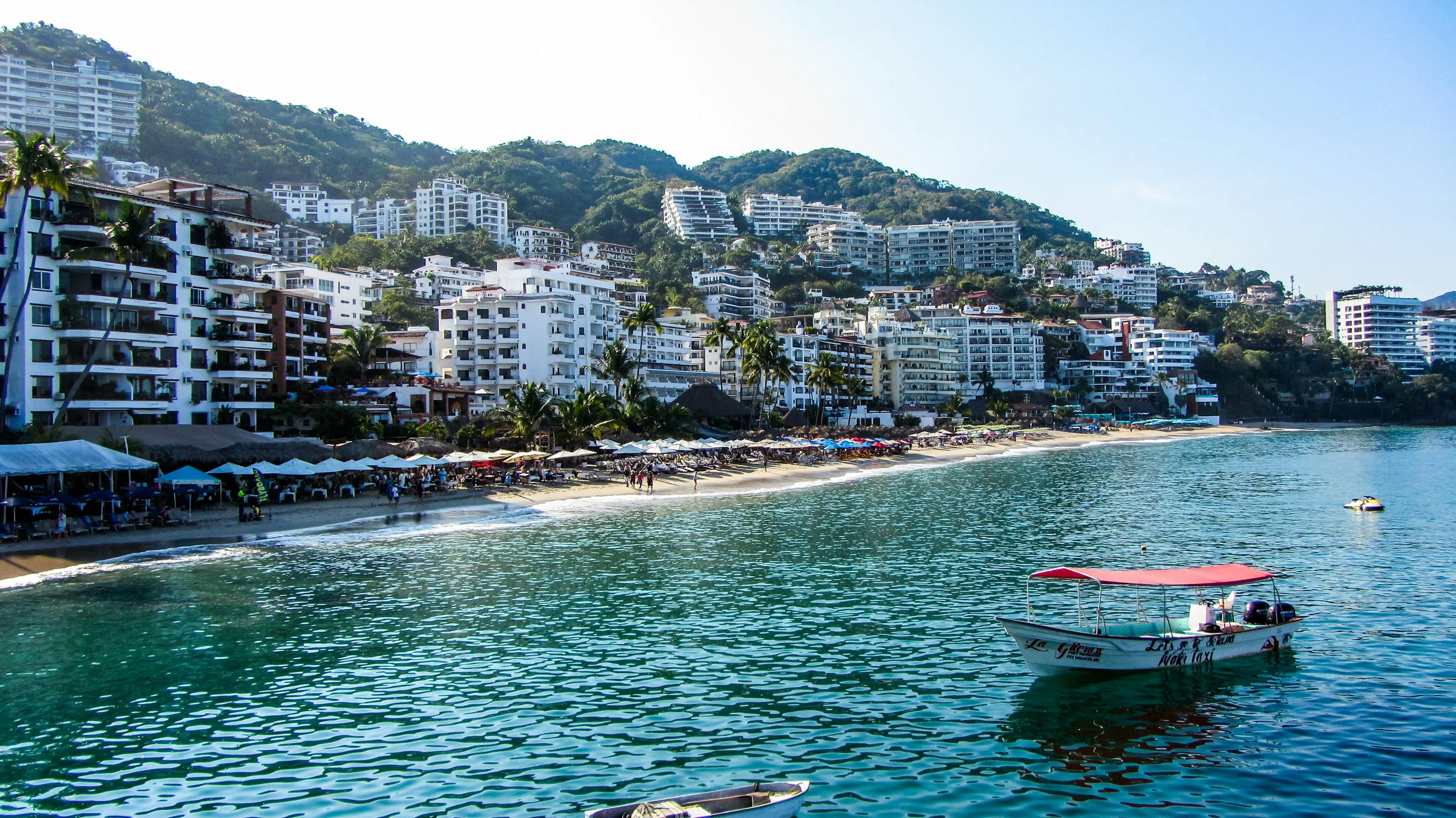Mexico’s Colonial Highlands has long been a popular area with both expats and tourists. The expat havens of San Miguel de Allende and, to a lesser extent, Guanajuato—both located in the state of Guanajuato—have been attracting a foreign population for 60 years or more. They are easily among the best-known expat destinations in Mexico.
But they’re not the only options in the Colonial Highlands.
For gracious, big-city living, Mexico style, it’s hard to beat Querétaro, capital of the neighboring state of Querétaro. This city—which has a population of about 1.1 million in the greater metropolitan area—has one of the highest qualities of life in Mexico. It’s also considered one of the safest cities in the country.
Querétaro has it all: a lovely, well-preserved historic center (which was declared a UNESCO World Heritage site in 1996); modern shops and malls; excellent medical facilities; concert halls, museums, and other cultural outlets; universities galore; and a strong local economy. If you’re looking for a sophisticated, yet genuinely Mexican destination, look no further than Querétaro.
Get Your Free Mexico Report Today!
Get Your Free Mexico Report Today!
Learn more about Mexico and other countries in our daily postcard e-letter. Simply enter your email address below and we’ll send you a free special report – Mexico: The Perfect Close-to-Home Retirement Haven.

By submitting your email address, you will receive a free subscription to IL Postcards and special offers from International Living and our affiliates. You can unsubscribe at any time, and we encourage you to read more about our Privacy Policy.
Retire in Querétaro

Querétaro (official name: Santiago de Querétaro) is well known among Mexicans. Founded by the Spanish in 1531, it was one of the most important cities in Mexico during the colonial period. But for today’s Mexicans, Querétaro is one of their “cradles of liberty”: The city played an early role in Mexico’s fight for independence from Spain, it later served as Mexico’s capital at several points in the country’s history, and all of Mexico’s constitutions (including the current one, signed in 1917) were signed in Querétaro.
This history has left Querétaro with a wealth of beautiful, mostly baroque-style buildings that lend a grace and grandeur to the central city. Today these buildings house government offices, churches, museums, and other public services.
For all these reasons, as well as Querétaro’s many modern amenities, the city is a popular tourist destination among Mexicans. But relatively few foreigners know much about Querétaro. And that’s a shame.
The city’s beautiful, well-preserved historic center is home to restaurants, cafés, markets, and shops. Stroll the shady, tree-lined Plaza de Armas and the streets near it, and you could almost think you were in Europe.
The centro’s wealth of Spanish-colonial buildings also includes many homes. Colorfully painted, flat-fronted buildings line the flagstone streets. Their front doors open to gracious halls and living rooms with high ceilings and ancient wooden beams…but often with modern furniture and amenities, as well. And all within easy walking distance of the centro’s shops.
Outside the center are modern neighborhoods, including a number on the outskirts that offer U.S.-style housing, with garages and front yards. They serve Querétaro’s large middle class and the many professionals who have moved here over the last 20 years. Querétaro has grown tremendously during that time, as many Mexico City companies moved their offices here. (The city is just a two-hours’ drive north of Mexico City.) Other industries have moved or grown up here, as well. Today Querétaro is important in the automotive industry, aerospace, food processing, and several other sectors.
To attract this growth, the city has invested in infrastructure, public services, park spaces, and cultural and sports facilities…all of which have helped make Querétaro a pleasant place to live. Major shopping malls on the outskirts, with stores from around the world, mean that you can find just about anything you’d want, whether its goodies from back home in Canada or the U.S., high-end electronics, first-run movies (in English, with Spanish subtitles), or gourmet food items from Europe and Asia.
For medical care, Querétaro offers a choice of numerous hospitals. These include both public and private hospitals, specialty units, and hospitals affiliated with the respected Angeles and Star Médica private hospital chains. You’ll also find many private clinics and doctors’ and dentists’ offices. (In fact, many expats in San Miguel de Allende, which is just an hour away, come to Querétaro for their specialty healthcare.) Medical services here—as elsewhere in Mexico—tend to run a quarter to a half of U.S. costs.
Lifestyle in Querétaro

Querétaro’s expat community is relatively small. Most expats here are business executives. However, a small number of expat retirees do choose to settle here. They tend to live in Querétaro’s pedestrian-friendly historic center. They also tend to be folks who want to live in a Spanish-speaking environment. (You do need a moderate level of Spanish to manage day-to-day life in Querétaro.)
Querétaro also attracts those who seek a mild climate. The city enjoys spring-like weather much of the year. Temperatures in July, the hottest month, range from an average low of 57 F to an average high of 80 F. In January, the coldest month, the average temperature ranges from 45 F to 73 F. And days are mostly dry and sunny.
Like the other cities of the Colonial Highlands, Querétaro sits at a high altitude—5,970 feet above sea level. However, Querétaro has a lower elevation than either San Miguel or Guanajuato, and it is also less hilly than these cities…its flag stoned streets are mostly flat and level. This can make Querétaro a good choice for those who want a walkable city…without steep hills.
Those looking for culture will find plenty in Querétaro. The centro is filled with beautiful, historic churches and museums, including the Museum of Art and the City Museum. Nearly three dozen universities and institutes are located in Querétaro and its surroundings, as well as numerous research centers. Sports fans can follow Querétaro’s two soccer teams, U.S.-style football, and other team sports. There are also numerous golf courses in the area, as well as swimming pools, gyms, and other sports facilities.
The Querétaro Intercontinental Airport, just outside town, has flights to destinations throughout Mexico, as well as flights to Dallas/Ft. Worth, Houston, Chicago, and several other major U.S. cities. In addition, Mexico City—with its Benito Juárez International Airport, the country’s busiest—is only two hours away.
Cost of Living in Querétaro

Despite it being a major city, Querétaro offers a surprisingly low cost of living. Its mild climate keeps air conditioning and heating costs are low. For shopping, the city offers a range of options at a variety of price points: from local stores to warehouse options like Costco and Sam’s Club, and to department stores like the high-end Mexican chain Liverpool.
Housing, particularly in the centro—where most retiree expats want to live—can be difficult to find. Expect to spend some time looking, especially if you seek a furnished rental. Rates for comfortable, centric, two-bedroom apartments tend to run from around $700 a month. Apartments for sale start at around $170,000, though you’ll find more on offer from about $200,000.
Here’s a sample budget for a couple living in Querétaro:
| Expense | US$ |
|---|---|
| Rent (two-bedroom apartment) | $750 |
| Utilities (electricity, gas, water) | $80 |
| High-speed internet | $30 |
| Cellphones (x2) | $25 |
| Groceries and household items | $300 |
| Entertainment | $150 |
| Healthcare (public) x2 | $80 |
| Incidentals | $150 |
| TOTAL | $1,565 |
10 Things to Do in Querétaro, Mexico
By Tiffany Pence

From ancient ruins and stunning Baroque architecture to wineries and waterfalls, the state of Querétaro has everything a person could want. The capital city of Santiago de Querétaro (Querétaro City) is a UNESCO World Heritage Site full of modern conveniences, international restaurants, and an exuberant history.
Whether you are visiting Querétaro or considering it for your next home, here are the top 10 things to do in Querétaro:
Jardin Zenea
Recognized by UNESCO for its unique city layout representing two cultures, the heart of the city is Jardin Zenea. On weekdays, it’s a great spot for people watching and relaxing with ice cream. On weekends and holidays, it’s decorated with balloons and food vendors. From Jardin Zenea, you can catch a tram to the furthest points of the historic center (Centro), relax at many restaurants, or wander up the pedestrianized streets lined with shops, fountains, and eateries to other plazas within Centro.
Museums
Start at the Querétaro Regional Museum, the former convent next to the Templo de San Francisco de Asis for an in-depth look at Querétaro from ancient civilizations to the Mexican Revolution. The Museo Arte Sacro was also a former convent and exhibits art from different periods. Haciendas from the 16th to the 18th centuries have been transformed into museums like the Museo Casa de la Zacatecana and Museo de la Conspiradores showing the life and times of those eras.
For something a little bit different, visit the Museo del Calendario (MUCAL) and explore its extensive collection of calendars. You will see everything from Aztec and Mayan calendars to the propaganda-filled calendars of the 1940s. They also have a lovely courtyard restaurant and bar.
Baroque Churches
Lovers of Baroque architecture will enjoy the many churches of Querétaro. Sit in a pew and marvel at the intricate details and sparkling chandeliers of the Templo de San Francisco de Asis and the opulent Baroque frescos of Templo de Santa Clara de Viterbo. The magnificent Templo y Convento de la Santa Cruz was erected on the battle site where a burning cross was seen in the sky between the Spaniards and the indigenous Indians. The monastery is still being used today.
Mirador de los Arcos and Pantheon of Illustrious Queretanos
Walk 500 meters behind the Templo y Convento de la Santa Cruz and you can look out on the past and present of Querétaro at the Mirador de los Arcos. The pink-stoned aqueduct cuts through the city with its 74 arches and makes a great backdrop for selfies. A marker just to the left of the viewing area commemorates the Camino Real de Tierra Adentro, an important trade route for silver that ran between Mexico City and San Juan Pueblo, New Mexico from 1598 to 1882.
Across the street is the Pantheon of Illustrious Queretanos featuring statues of important benefactors for the arts and politics. Josefa Ortiz de Domínguez known as La Corregidora, was a prominent figure and patriot during the revolution. She sent the message to Father Hidalgo that the Spanish had discovered they were planning to revolt. This led to Hidalgo’s Cry for Independence and the beginning of the Mexican War of Independence. Her burial crypt stands in the middle of the property, and inside the chapel, you can view pictures and letters from her life.
Cultural Activities
Plazas are the center of activity in Querétaro. During holidays and festivals, bands and dance troupes set up stages around the fountains and there’s no shortage of fantastic street food. Visit during Holy Week for the Festival of Santiago de Querétaro, one of the largest cultural events in the city. Day of the Dead and Christmas are also big celebrations in Querétaro with decorations and candies for the kids.
If you enjoy theater, check out the 500-seat Neoclassical Teatro de la República in Centro with performances from ballet to movie documentaries. Smaller venues are known for comedy, improv, and college productions.
For an entertaining historical overview of Querétaro, join the Legends and Myths tour. This nightly walking tour will highlight the prominent people of the city that made it what it is today. You will visit Casa de la Marquesa, one of the most beautiful haciendas built by Marques de la Villa del Villar del Aguila. Marques fell in love with a nun, who happened to be his wife’s cousin, and she did not return his feelings. Instead, she used his affection to bring clean water and many other spectacular architectural features to the great city and people of Queretaro without compromising her integrity.
Queretano Regional Cuisine
From street food to fine dining, Queretanos know how to eat! Querétaro is known for its Enchiladas Queretanas and gorditas, a thick tortilla stuffed with various fillings. Twenty minutes north of Centro is Santa Rosa Jauregui, the carnitas capital of Queretaro. Prickly pear, red-battered tamales, atole, and cajeta (goat’s milk caramel) are also popular in this region.
Mercado de la Cruz is a good place to start for local cuisine and fresh produce. Chow down on tacos or pozole before buying the best produce in season and a variety of meats. You can find every type of regional Mexican cuisine in Queretaro from Michoacan ice cream to Yucatan Conchinita Pibil.
Cerro de la Campanas
Hop on the trolley to visit the outskirts of the historic district like the Hill of the Bells. This beautiful park is where Emperor Maximilian I of Austria (brother to the Emperor of Austria) was executed after his short three-year reign over the Second Mexican Empire.
Hike for the Views
If you need a break from the history of the city, head to el Cimatario, a national park that rises south of the city and provides easy hiking and spectacular views of Querétaro.
For an easier and shorter hike, visit the ancient Pyramid of El Cerrito Archeological Zone. You can’t climb the pyramid, but it is a fascinating display of Toltec pyramid architecture. Dating back to 300 CE it was an important political and religious center of the region for the Chupicuaro, Toltecs, Otomis, and other tribes. Artifacts from El Cerrito can also be seen at the Querétaro Regional Museum.
Queretaro Wineries
The state of Querétaro boasts its own wine region within an hour’s drive from Centro. Known for exceptional sparkling wines and red blends, winery tours are available, and some have added wine bars, hotels, and high-end restaurants.
Pueblos Magicos of the state of Querétaro
Take a day or two and explore the pueblos magicos of the state of Querétaro. Start in Santiago de Bernal and hike the third largest granite monolith in the world. Afterward, grab a gordita in town or at the base of the mountain and some cajeta candies before visiting the botanical gardens in Cadereyta de Montes. For relaxation, head to Tequisquiapan with its pink church, spas, and wine bars. Almealco, home to waterfalls and the Maria doll museum, is a nice 90-minute drive south through sheep country. Jalpan de Serra in the Sierra Gorda Mountains is the perfect base camp for a few days of hiking, waterfalls, and visiting the Franciscan Missions.
Get Your Free Mexico Report Today!
Get Your Free Mexico Report Today!
Learn more about Mexico and other countries in our daily postcard e-letter. Simply enter your email address below and we’ll send you a free special report – Mexico: The Perfect Close-to-Home Retirement Haven.

By submitting your email address, you will receive a free subscription to IL Postcards and special offers from International Living and our affiliates. You can unsubscribe at any time, and we encourage you to read more about our Privacy Policy.














